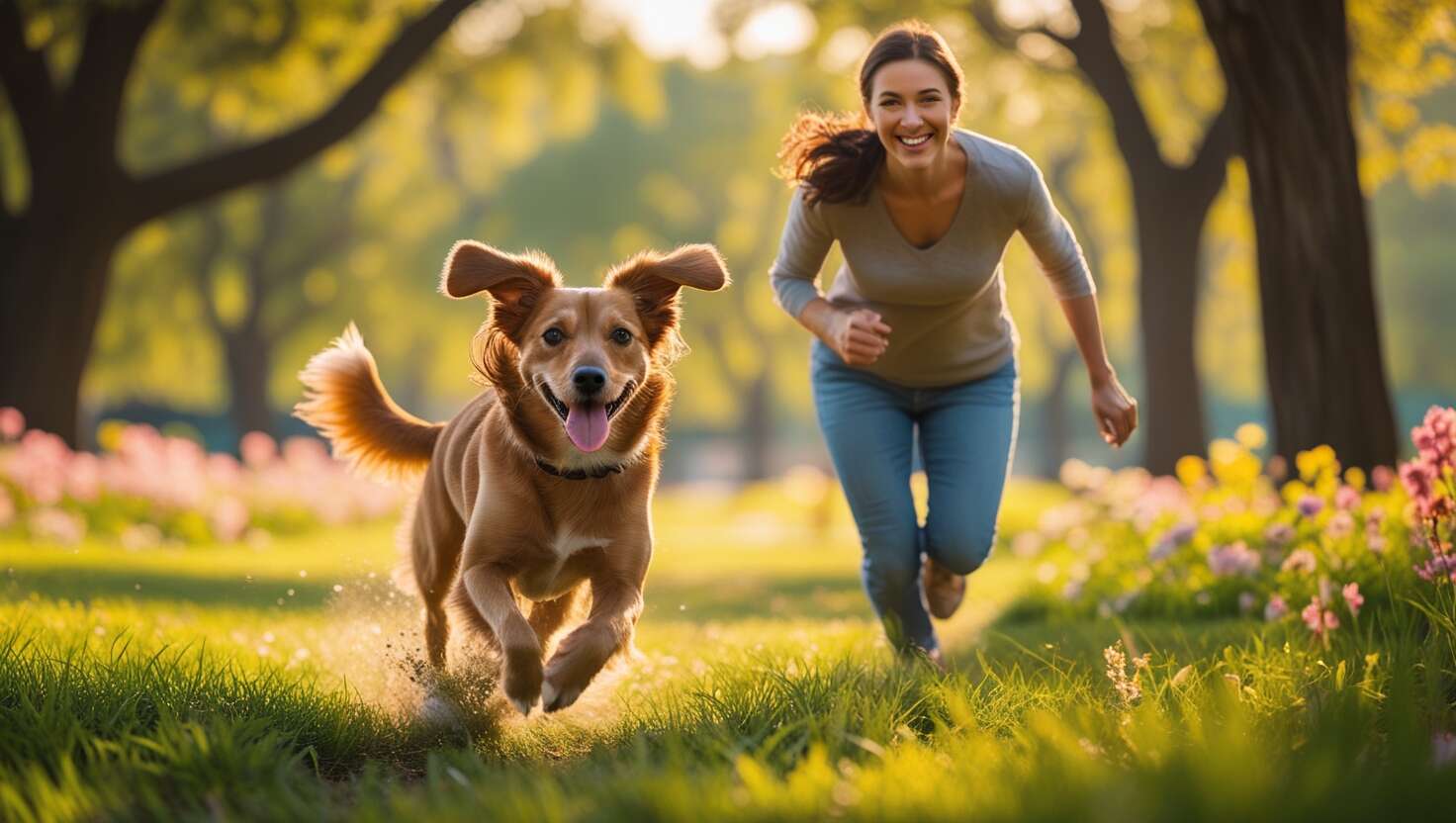How Much Exercise Does Your Dog Need?
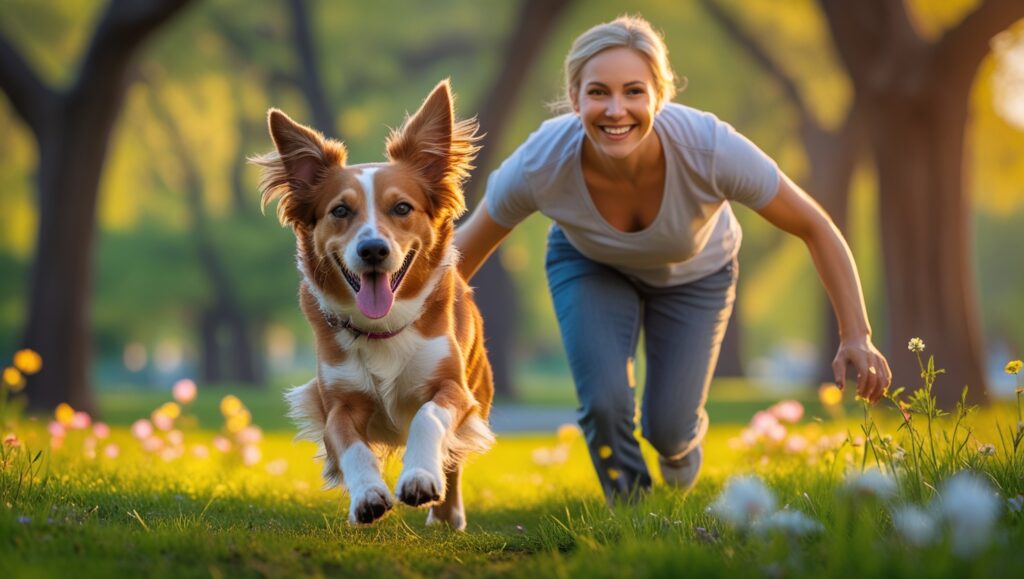
Dogs need exercise based on their breed, age, and health. High-energy breeds require more activity, while senior or brachycephalic dogs need gentler movement. Regular walks, playtime, and mental stimulation prevent obesity, boredom, and behavioral issues.
Why Exercise Is Essential for Your Dog’s Wellbeing
Keeping dogs in tip-top shape isn’t just about feeding them right—it’s about regular physical activity too. A daily walk, a game of fetch, or even agility training helps maintain a healthy body and sharp brain. Without enough stimulation, unwanted behaviors like chewing and excessive barking may develop. Plus, exercise can reinforce positive habits while helping reduce stress and boredom.
Dogs of different sizes and activity levels need varying amounts of movement. A medium-energy breed may need more than a simple walk to stay fit, while highly active dogs thrive with extra play and challenges. Proper fitness keeps weight, muscle tone, and metabolism in check, lowering risks of arthritis, obesity, and other problems. If you have concerns about your pet’s condition, seek vet advice to ensure they remain happy, satiated, and full of ability for years to come.
Factors That Determine a Dog’s Exercise Requirements
A dog’s breed greatly impacts its exercise requirements. Huskies and Jack Russell terriers are highly active, needing intense workout routines, while a pug or mastiff benefits from a stroll or short speed-walks in the neighborhood. Breed-specific traits, like brachycephalic dogs with short snouts, make it harder to breathe, increasing risks of heat exhaustion.
Age matters too. Puppies need short bursts of play, with veterinarians advising pet parents to follow the “five minutes per month” rule. Senior dogs, however, require gentle, low-intensity movement to avoid arthritis pain. A common mistake is not adjusting sessions as dogs get older.
Health conditions like obesity, hypothyroidism, or Cushing’s disease affect exercise levels. Dogs with respiratory, heart, or endocrine issues may need an adjusted routine. A veterinarian should clear any plans for dogs with chronic illnesses.
A dog’s personality also plays a role. Labrador retrievers may love water sports like dock-divers, while some are natural couch potatoes needing motivation. Proper interaction, mental stimulation, and balanced movement help prevent behavioral issues and ensure a happy, healthy pet.
Exercise Needs for Different Life Stages
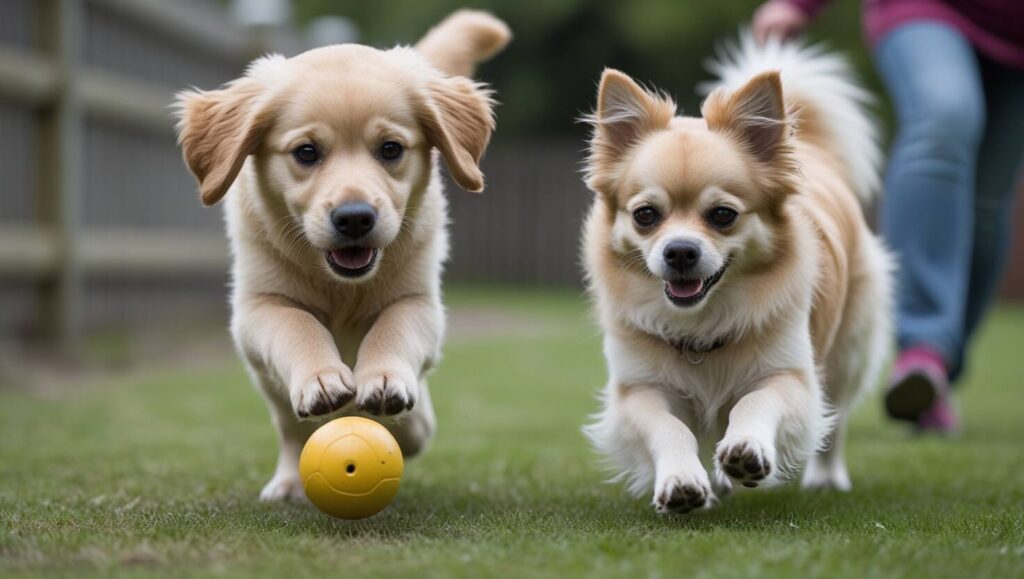
Puppy Need
Puppies are full of energy but have low stamina, needing short bursts of play with plenty of rest. A 10-week-old Husky can’t tackle a hike like an adult dog, as their bones, joints, and cartilage are still developing. Overworking them is harmful, so balance sessions with napping. Until fully vaccinated, indoors walks and carrying them outside for new sights and smells help build their immune system.
Adult Dog Need
An adult dog’s exercise depends on breed and lifestyle. Sporting dogs like Retrievers, Pointers, and Setters need at least 60 minutes of intense activity, while Toy breeds like Pomeranians can tire after 30 minutes of indoor zoomies. Flat-faced dogs like Pugs and Bulldogs have low breathing tolerance, so avoid the hot summer sun and opt for cool, leisurely walks.
Senior Dog Need
Older dogs have mobility limitations, requiring low-impact activities like swimming to relieve joint pain. Weight management is key, as obesity can worsen hip dysplasia and heart problems. A vet can suggest a routine with physical therapy, massage, and heat or cold treatments to reduce discomfort and prolong their healthy years. Owners should observe their dog’s stimulation levels and judge when breaks are needed.
Exercise Needs for Dogs with Special Considerations
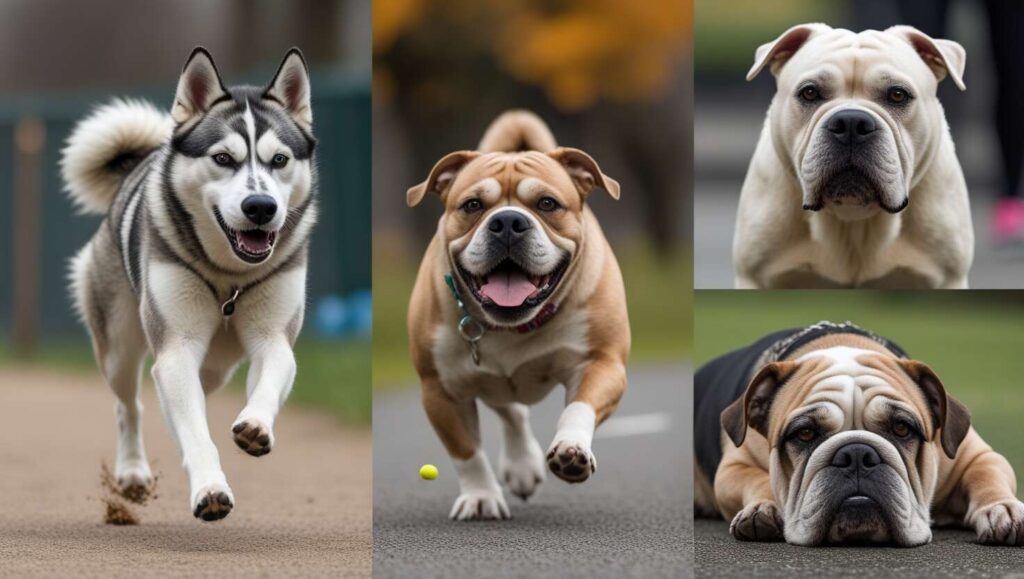
Flat-faced Breeds
Pugs, Bulldogs, and Shih Tzus have breathing constraints, making fast movements and throwing a ball too tough. Short walks during cool parts of the day help them stay comfortable while avoiding stress.
Chihuahuas
As one of the smallest breeds, Chihuahuas have energy but expend it in short bursts. They typically require light exercises and are great couch companions for a busy lifestyle.
Dachshunds
With long bodies and short legs, miniature and medium Dachshunds should avoid excessive running and jumping to prevent joint problems. Lower-maintenance routines suit them best.
Basset Hounds
Naturally laid-back, Basset Hounds have low energy but still need relatively regular activity to stay healthy.
Mastiffs
Being large breeds, Mastiffs have limited endurance and are often reasonably healthy potatoes, thriving with low-impact movement.
Exercise Guidelines Every Dog Lover Should Know
If you’re a dog lover, you’ve probably mentioned the word W-A-L-K-I-E-S and watched your pup perk up their ears, eagerly searching for the lead. But have you ever wondered how much exercise your dog really needs? While an exercise calculator can help, the ULTIMATELY right amount depends on your dog’s age, energy level, and health. Puppies burn steam with boisterous play, while senior doggos prefer a good, daily walk to stay mentally and physically healthy and reduce unwanted behaviours like anxiety and boredom.
A general guideline is that low-energy adult dogs do better with at least one 20-to-30-minute leisurely walk weekly, while high-energy breeds need two 30-minute brisk walks daily. Veterinarian recommendations are important, especially for dogs with restrictions due to growing conditions or age. Always pay attention to the weather—hot, humid, or frozen surfaces can be dangerous for their paws.
Beyond regular physical activity, mix in fun! Try hiking, playing fetch, or tug-of-war in safe locations. Hide-and-seek and swimming are great options too. For more advanced training, agility, obstacle courses, or even dock diving can be a friendly, exciting way to keep your dog engaged.
Fun and Effective Ways to Exercise Your Dog
- Walking – A daily routine of 1-2 walks helps burn energy. Mix brisk walking with slow, meandering strolls for mental health through sniffing and exploring.
- Swimming – A great option for dogs with joint problems. Use a pool, river, lake, or sea, ensuring water safety.
- Running & Jogging – Short stretches of running or jogging improve stamina, but check vet advice before starting.
- Agility Training – Try obstacle courses with hurdles, tunnels, seesaws, and weave poles to bond and socialise.
- Hiking – Choose a route that fits your dog’s fitness level, avoiding steep scrambling in extreme weather.
- Playtime – Games like tug of war, chasing, searching, or scent games reduce boredom.
- Dog Sports – Activities like AKC Agility, AKC Flyball, and AKC Scent Work provide stimulation and meet high-energy requirements.
- Biking & Skating – Cycle, skate, or skateboard with a leash, harness, and safety gear in an enclosed space.
- Draft Work – Sledding, cart pulling, or skijoring give working dogs a job while building endurance.
- Indoor Activities – Use a treadmill, hide-and-seek, stairs, or furniture obstacle courses during inclement weather.
- Warmup & Cooldown – Prevent muscle strain with proper warmup, cooldown, hydration, and shade to avoid heatstroke on hot pavement.
Keeping Your Dog Safe During Exercise
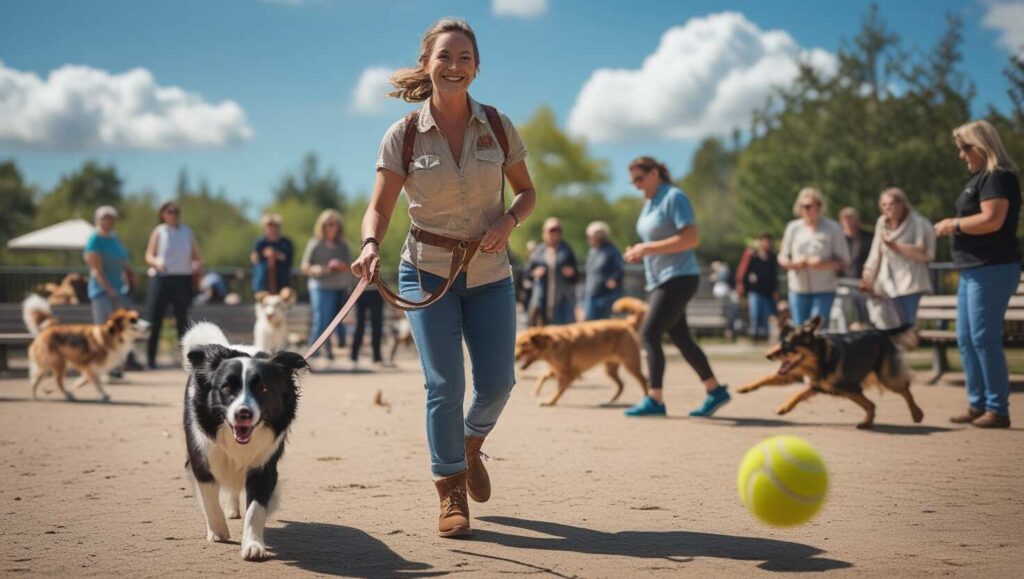
Vets share tips to keep dogs safe and happy while they exercise. Training is essential for a successful walk, especially in the general public. Recall should be practiced in an enclosed garden or park before using an open space.
Using proper collars, leads, and ID tags is a legal requirement in public. Tags should have your name, address, and postcode. Extendable leads can be dangerous near roads or livestock in the countryside.
In summer, walk during cooler hours to prevent heatstroke, and in winter, use a high-visibility jacket for cold, dark conditions. A harness and leash are best in unfenced areas or high-distraction places like dog parks. Pet owners should watch their pup during play to prevent distress or aggression from escalating.
Fitting Dog Exercise into a Busy Schedule
For busy schedules, keeping our furry friends active is key to their wellbeing. If time is tight, combine a morning or evening run with your dog or fit in short hiking activities on weekends.
Doggy daycare is an efficient way to provide supervised play with a playmate, helping burn excess energy. Owners can also hire walkers or sitters, a true lifesaver when rushing home from work.
At home, a pet-friendly environment with hide-and-seek, sniff games, or treat-filled toys keeps dogs entertained. Using stairs can encourage movement, ensuring they get plenty of activity even indoors.
Signs Your Dog Needs More or Less Exercise
Too little exercise can cause behavioral issues like whining, barking, pacing, destructiveness, or even house-soiling. If your dog keeps chewing items, raiding the trash, or opening doors, they may need more attention and playtime. Some dogs, like energetic breeds, require frequent activity, while mixed breeds may show variation depending on their developed purpose.
Dogs prone to health problems like obesity or arthritis should be evaluated by a veterinarian before changing their routine. Instead of assuming, use trial and error to find a typical balance for your particular dog. If they always initiate play but never relax, they may need more stimulation.
Some dogs, like Winston the Standard Poodle, spend an hour napping after exercise, while others stare out the window barking at their imaginary kingdom. Separation anxiety, crate training, or feeling like a prison can also cause restlessness. Try a cozy crate or a frozen Kong for comfort.
Over-exercising can lead to stiffness, limping, heavy panting, drooling, reddened gums, or even heat exhaustion. If your dog frequently stops, lies down, or shows signs of overheating, intervene and slow the pace. Adjust the duration of walks, including brisk, sniff stops, and evening ambles, for a balanced outlet of energy.
Get Precise Advice from a Vet
Every dog is different, so a vet can give precise advise on the right amount of exercise for your dog’s breed, size, weight, and health. Some dogs have issues that limit their activity, while others need more stimulation to stay happy and healthy.
Through trial and error, you can find the best balance of activities based on your dog’s energy levels and the weather. A young, active dog will need more movement than an old dog, but every dog benefits from a well-planned routine.
Conclusion
Exercise is essential for keeping dogs physically fit, mentally engaged, and emotionally balanced. From playful puppies to aging seniors, each stage of life requires a tailored approach to activity. A mix of walks, games, and low-impact exercises ensures they stay happy and healthy. Always consider your dog’s breed, health conditions, and individual personality when planning a routine. If unsure about exercise levels, consult a veterinarian for personalized advice. A well-exercised dog is a joyful and well-behaved companion.
Kindly note: The content shared in this blog is gathered from online sources, some of which may not be verified. For accurate guidance on caring for your dog, it is recommended to seek advice from a qualified veterinarian.

